
I had never been much interested in agates, but these photos really opened my eyes to the diversity and beauty of these round rocks. Now geography is not my strong suit – I leave that to Leigh – but when I realized that Agate Creek is actually up in our neck of the woods (North Queensland, Australia), arrangements were made to spend a few days there.
More than a century ago, prospectors explored the area around Gilberton for gold deposits, as the region had shown a lot of promise for commercial gold mining ventures. It was discovered that an abundance of amygdule-derived agates had accumulated in one of the creeks that flowed into the Robertson River. These agates were believed to have weathered and eroded from basalts of Carboniferous age, which were covered in sedimentary sandstone material when this region was an inland sea. The creek became known as Agate Creek and was first officially mentioned by W.E. Cameron in his GSQ report dated 1900. At that time, agate was thought to be beautiful but of little real value as mines in Germany and Brazil supplied the world market.
After World War II had affected Germany’s output, a couple of commercial mining companies began using machinery to recover sufficient quantities to make a viable operation. Unfortunately, Agate Creek’s remoteness and lack of infrastructure were against them. Lapidary and rockhounding became a more popular pastime for hobbyists. After some considerable conflict between miners and fossickers in the field, the Department of Minerals & Energy amended the regulations to prevent mining with equipment from being carried out at Agate Creek. Anybody could use hand-tools, but this, of course, led to the closure of the mines and the area being subsequently declared a General Permission Area (GPA).
This story is from the September 2021 edition of Rock&Gem Magazine.
Start your 7-day Magzter GOLD free trial to access thousands of curated premium stories, and 8,500+ magazines and newspapers.
Already a subscriber ? Sign In
This story is from the September 2021 edition of Rock&Gem Magazine.
Start your 7-day Magzter GOLD free trial to access thousands of curated premium stories, and 8,500+ magazines and newspapers.
Already a subscriber? Sign In
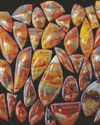
MORGAN HILL POPPY JASPER
In California, there are very few places to collect semi-precious stones. Many locations from the past have been either exhausted of the material or the land has been developed.
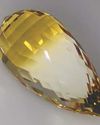
THE ACORN
The briolette gemstone has the same design attributes of a regular gemstone, however, the pavilion is elongated and the crown is usually domed. This is perfect for an elegant pendant, earrings or a pendulum.
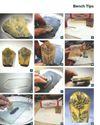
HOW TO PUT A PROTECTIVE CAP ON A CAB
To protect a specimen cab, often a cap is needed. In my case, I had a slab with the because of the color of the background and the pattern. This background had a more silicified consistency than most sandstones. It had no graininess like most sandstone, so I'm inclined to compare it to a jasper. The pattern was typical of a dendrite.

The Resilient Revival of Anne Brontë & Her Stones
For the first time, the Anne Brontë rock collection underwent complete description and identification, and along with Professor Hazel Hutchison of Leeds University and Dr. Enrique Lozano Diz at ELODIZ (a company specializing in spectroscopy analysis), an analysis of that collaboration, Anne Brontë and Geology: A Study of her Collection of Stones, was published in April 2022 in Volume 47, Issue 2 of the peer-reviewed journal, Brontë Studies & Gazette.\"

Amazing Women with Rock-Solid Careers
Explorers, Geologists, Educators & Jewelry Makers...
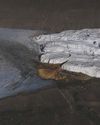
The Case of the Bleeding Glacier
It's a gory sight called Blood Falls. Ever since British geologist Thomas Griffith Taylor first noted it in 1911, it has been a mystery.
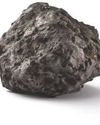
Asteroid Samples Are Said to Hold Invaluable Secrets
If Only Scientists Can Pop the Lid!
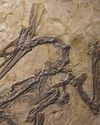
Paleontologists Embrace a New Method for Seeing Fossils within Rock
Fossil bone can be delicate. Attempts to remove it from a hard rock matrix by picking and scratching or etching with acids can be time-consuming and/or may end up obliterating that which you hope to study.

Need a Map of the Ocean Floor?
Call in the Seals!

A Step Closer to Hydrogen, the "Climate-Friendly Fuel"
As I reported last June, the world is racing to find sustainably renewable, nonpolluting sources of energy to replace our carbon-based reserves of coal, oil and gas.